Greetings from the Kiel Reese lab from McMurdo Station, Antarctica!
The last few weeks have been a whirlwind containing a sampling station, inventorying and packing up the lab and personal belongings, and spending time taking in the views as we approached McMurdo.
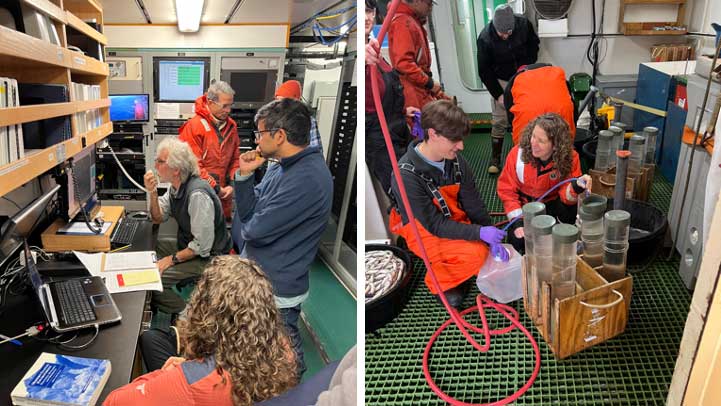
A) Watching the CTD operations and recording sample depths. B) Caleb Boyd and Dr. Brandi Kiel Reese selecting sediment cores for subsectioning.
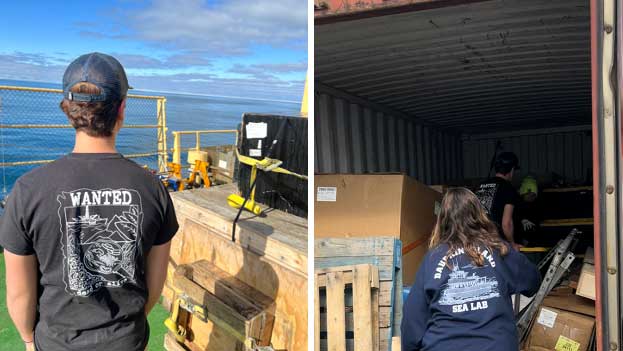
Scenes from packing up our supplies for the next cruise featuring our Lab shirt!
After sampling, we made our way to McMurdo Station. Along the way, we sailed between Beaufort Island and the Ross Ice Shelf. The Ross Ice Shelf attaches to Ross Island and it is truly something to behold. The Ross Ice Shelf covers the entire southern part of the Ross Sea embayment and ends seaward in a cliffed ice front about 400 miles long and ranging from 15-50 meters tall. Ross Island is a volcanic island and is home to Mt Erebus is the world's southernmost active volcano. We could actually see it smoking! There are two other mountains – Mt. Byrd
and Mt. Terror that we could also see from the ship. Ross Island is also where our final destination is – McMurdo Station.
As we made our way to McMurdo, Captain Rick, and his mates were hand-steering the boat through patches of open water and soft ice to make our transit as easy and quick as possible. This allowed us to get some really up-close views of the glacier face and the three mountains.
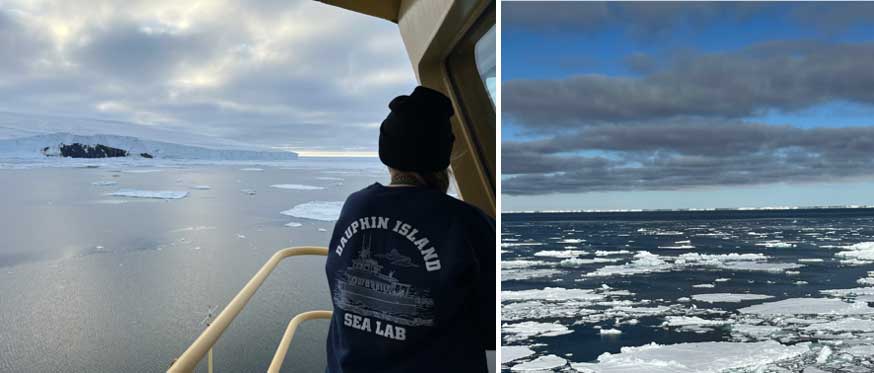
An up-close look at Mt. Byrd, B) the Ross Ice Shelf on the horizon.
During our transit, we kept busy by watching for penguins and seals. This was a great reward for a busy week of work. From both the bridge and the deck, we saw penguins, porpoises in and out of the water in groups. If we looked at an ice floe long enough we could see penguins hop up onto the icebergs. We saw a variety of leopard seals, Weddell seals, ross seals, and crabeater seals.
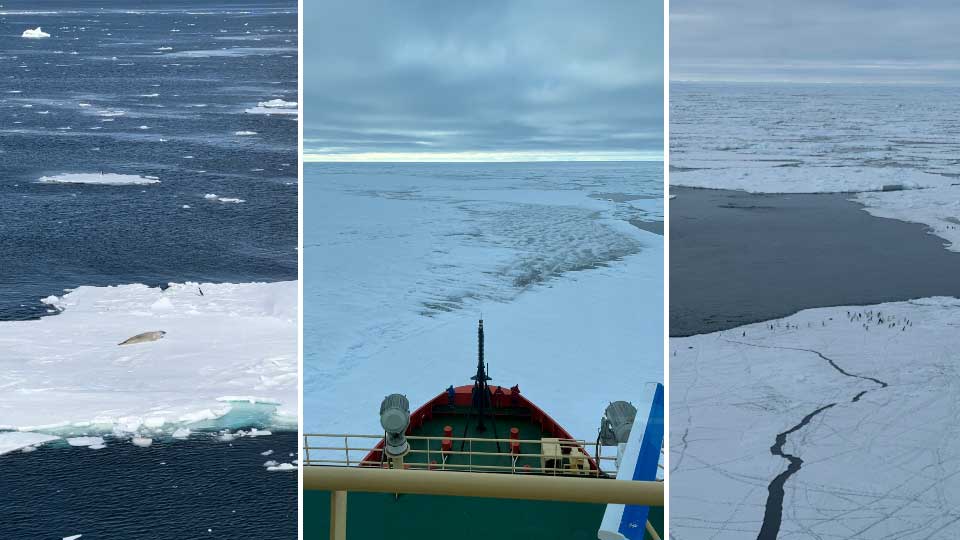
A) Crabeater Seal and Adelie Penguin sharing an ice floe, B) A view from the bridge during ice breaking in transit, C) A flock of Adelie Penguins
We arrived at McMurdo around 9 am. The captain began breaking ice to dock the ship. The ice here is about 6 feet deep so the captain chipped away at the ice bit by bit by ramming the ice, backing up, and ramming again. Almost 5 hours later, we finally arrived.

The R/V Nathaniel B Palmer docks at McMurdo Station.
After getting accustomed to walking on land again, we went through a series of safety lectures covering outdoor safety, environmental practices, and life at McMurdo station. Upon our arrival, the population at McMurdo Station was 750 people. Most of our time in McMurdo was spent walking around the different vistas within the station.
One of the more iconic viewpoints is George Vince’s cross commemorating an explorer who died on a 1904 expedition. Down the hill from this cross is Discovery Hut built by Robert Scott during his Antarctic expeditions from 1901-1912. We were lucky enough to get a tour of the hut and could see leftover supplies from Scott’s last expedition fully preserved thanks to the Antarctic conditions.
To see more of Ross Island, we hiked Observation Hill and Castle Rock Loop and visit New Zealand’s research station, Scott Base.
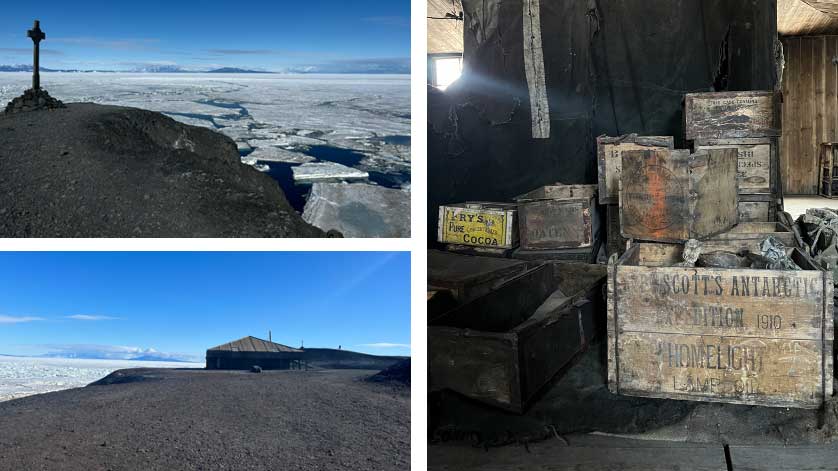
George Vince’s Cross, Discovery Hut, and leftover supplies from Robert Scott’s final Antarctic expedition.
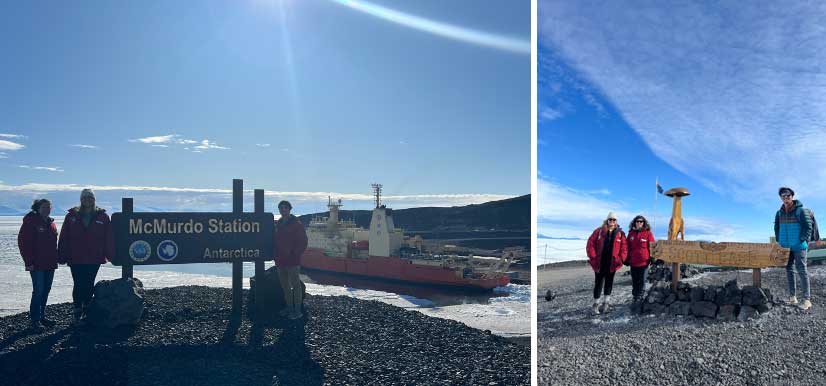
Lab photo of the Kiel Reese Lab both at McMurdo Station (U.S.) and Scott Base (N.Z.).
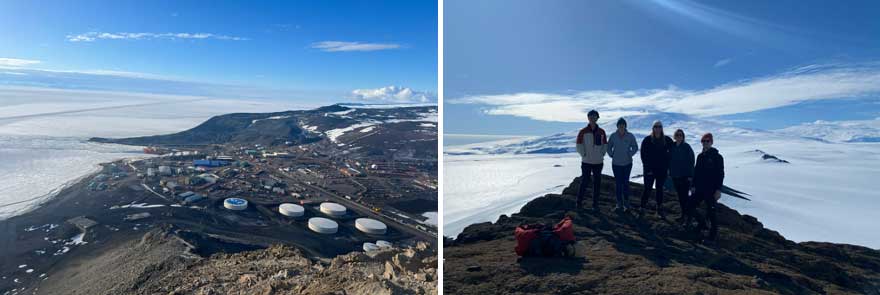
A) View of McMurdo Station from Observation Hill, B) Some of our team at Castle Rock
While in McMurdo, we got to know the people living at the station during a tour of Scott’s Hut, live music nights, Taylor Swift Tuesdays, in passing on hiking trails, and at the local coffee house. Most people had been in McMurdo since the summer season started for them in October and will remain until the end of March. It was great hearing how people decided to come to McMurdo and learn where everyone was from.
One of the highlights of our time at McMurdo Station was getting to see the NSF headquarters and the Crary building where scientific research is conducted. This is also where Dr. Kiel Reese gave a presentation: “Wanted Dead or Alive: Hunting for Microbes in Methane Hydrates”.

NSF McMurdo headquarters, Dr. Brandi Kiel Reese presenting at Science Night, and lab within the Crary Building.
While our time at the McMurdo research station was brief, it was certainly memorable. We finally started our journey home by departing McMurdo Station in style on an Air Force-operated ice flight to Christchurch.
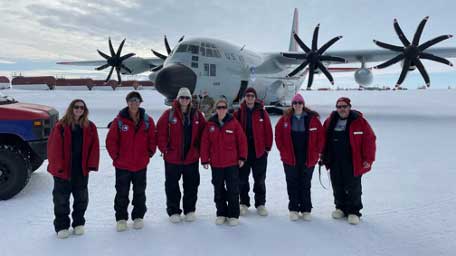
Final picture in Antarctica, preparing for our ice flight.
It has been an amazing adventure and we cannot wait to return on the next cruise. But in the meantime, we have samples to process. We thank you all for reading about our journey!
All our best,
The Kiel Reese Lab